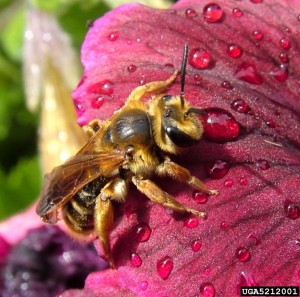Join the Northeast Pollinator Partnership! A lesson scientists can learn from citizens, especially apple growers, is which native bees are pollinating their apple blossoms and where. Apple flowers need pollen from another flower in order to be fertilized (don’t blush!). Indeed often the pollen has to come from another apple tree of a different variety. For more information on that, read Pollination and Fruit Set of Fruit Crops.

The Northeast Pollinator Partnership wants perspectives and opinions from Northeast apple growers, consultants, researchers, extension educators and backyard apple growers. Created by Bryan Danforth, Professor in the Department of Entomology, Cornell University, the Northeast pollinator partnership, seeks to assess grower support and willingness to participate in a citizen science project on apple pollination. The goal is to implement a data collection website for smartphone apps where people can report bee observations during bloom in their orchards. Visit the NE Pollinator Partnership website to learn more and express your support.
A great deal of work is being done at Cornell University on wild pollinators. What Danforth’s lab has learned is that wild bees are better at pollinating apples than honey bees. Although, they don’t make honey! A recent article in the Cornell Chronicle, Native bees are better pollinators, more plentiful than honeybees, finds entomologist, describes their work. The pollinator partnership will ultimately provide the knowledge base from which to create an app that farmers can use to predict their need for pollination services to grow the delicious apples we so love to eat.
Native bees and how to encourage them in crop production is also being explored by the research labs of Brian Nault, for pumpkins, and Greg Loeb, for strawberries. Learn more about wild pollinators from the Entomology Department at Cornell and while there, download the popular bulletin, Wild Pollinators of Eastern Apple Orchards and how to conserve them.
Please visit the Northeast Pollinator Partnership to join us in building our understanding of the biodiversity, abundance, and value of wild bees.